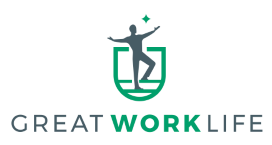I asked 21 busy professionals, business owners, consultants, and strategists for their favorite time management tips. The answers were interesting and insightful; I hope they help you.
What is Time Management?
Time Management is the process of structuring your valuable time, allocating the right duration to tasks, and prioritizing important work to ensure you hit your targets and goals on time and with the right quality level. Time management requires good planning and solid organization skills.

1. Eat That Frog Time Management
I’ve been an entrepreneur for over ten years now. The biggest factors in my success have been productivity and organization, so I have a lot to say about making Mondays more productive, which you could add to your article.
To have a productive Monday, start the day before on Sunday night. Do a quick weekly planning session for 5-10 minutes every Sunday evening. This means that you can hit the ground running on Monday morning. You won’t end up wasting time deciding what you should be working on—you just do it.
In my early years as an entrepreneur, I used to start on a Monday morning by looking at the emails that had come in overnight and working through them. This killed my productivity on a Monday, as I’d inevitably end up responding to low-value emails. By implementing a quick planning session on Sunday evening, I’d know exactly what I was supposed to be working on and could just wake up on Monday morning and start working on that.
📖 Recommended Reading: Eat That Frog – Do the Tough Tasks First
Another point on top of this is around priorities.
“Pick the hardest task of that day and complete it before doing anything else.”
Even if you do nothing else that day, you will still make good progress and be productive this way.
It also helps avoid procrastination. Many people do small or unimportant tasks to make it feel like they are making progress when they aren’t.
For years, I focused on the small, quick tasks first. This meant I kept putting off the more challenging tasks, which tend to impact the business the most. When I switched to doing the hardest task first, my productivity skyrocketed.
Scott Watson, Co-Founder of Wickfree Candles
Get Eat That Frog Summarized by Blinkist
2. Track Your Time
I’ve started rigorously tracking my time, even if I’m not billing my hours or tracking them for any project.
I’m generally very efficient at work, but like in many cases, a lot of data lives in the “tail-end” of activities. Timing that is unreasonable, though, until I started using a time tracking app that was so easy that I could switch to “miscellaneous” with a one-click as I answered a few messages from friends and then switch back to what I was doing with another click. And what I realized is that that time adds up!
The tool is called clockify.me, and it’s free. I always run it in a separate window, or you can use the browser extension.
It’s not only helped me realize I “lose” a lot more time in the day to inefficiencies than I realize, but it also means every time I choose to do something inefficient, I have to make a conscious decision to do so because I’m “clocking out.” It probably helps me recover a good 3-4 hours a week.
Plus, it helps identify just how much time certain tasks take, making it much easier to identify candidate activities to outsource to someone like a VA.
Abir Syed. CPA and Accounting Consultant, Upcounting.com.

"When You Stop Learning, You Stop Living" SkillShare Makes Learning Easy. Skillshare Is Our #1 Rated Learning Platform With Great Lessons On:★★★★★ Creating: Photography, Film-Making, Music, Graphic Design & Coding ★★★★★ Building: Leadership, Communication, Entrepreneurship & Marketing ★★★★★ Thriving: Personal & Professional Development, Productivity, Time Management "Skillshare is like Netflix for learning. I take a course every time I need a new skill. With over 30,000 courses to choose from, I always have something to learn." Barry D. Moore - Founder: GreatWorkLife.com |
3. Work in Sprints
My biggest productivity tip is to work in sprints. Not only will it help your focus, but it will also align with the ultradian rhythms that are hardwired into each one of us.
📖 Recommended Reading: The Unamerican Dream
Our brains are wired to work 90-120 minutes at a time and then require a time of rest (15-20) to refresh. I practice this each day, stepping away from my work after one of my “sprints” of 90-120 minutes. I have found, as have others I have helped, that I am more creative, get more done in less time, and have energy throughout the day to accomplish all my tasks with better quality and results.
Carlos Hidalgo is a 25-year business veteran, 2-time author, business owner, and international keynote and TEDx speaker.
4. 15-Minute Meetings
Are you inundated with meetings and finding it difficult to get any actual work done? There is a rapid cure for this: Reduce your meeting times to 15 minutes. This works especially well in remote team meetings or conference calls, as there is no traveling between meeting rooms.
Try it out in meetings with a single topic or a few participants; it works wonders because it forces people to get directly to the point. Also, ensure you are very clear about the specific goal or deliverable of the meeting in the invite. For example, use “Meeting to decide on exact dollar investment for new office laptops;” do not use “Laptops Meeting.”
“If you’ve ever had an office job, you know how incredibly boring meetings can be. But that’s not the only problem with meetings. The eighth secret is that most meetings are inefficient, and you should only schedule them as a last resort.
📖 Recommended Reading: 15 Secrets Successful People Know About Time Management
A 2015 survey found that 35 percent of respondents considered weekly status meetings to be a waste of time for these two primary reasons:
First, in accordance with Parkinson’s law of triviality, meeting participants tend to waste lots of time on insignificant issues. Second, extroverts usually dominate meetings, making others less likely to participate. As a result, valuable information might not be shared during such gatherings.
Excerpt from 15 Secrets Successful People Know About Time Management by Kevin Kruse
Listen to 15 Secrets on Blinkist (15 mins)
5. Save Time, Say No
If you have a huge workload and are being asked to do more and more, it is usually not a good career move to keep saying no and using the reason you are too overworked.
The best approach is to say yes, it is possible, but which of my current tasks will be deprioritized or delegated to others to make space for this task?
No matter how productive you are, there will always be more work to fill up the space you have managed to free up in your working day.
So, be mindful of how much work you take on. This seriously affected me, to the point that I had so many important deliverables that I was working 14-hour days. I adopted the approach of renegotiating my priorities, and I only focused on business-critical activities; everything else was delegated.
6. Use Focus Zones
Design your ideal week with focus zones. Instead of doing things as they come along in your day, batch your tasks together.
Take a sheet of paper and create ten boxes (five days a week—morning/afternoon). Each focus zone should be dedicated to a specific type of activity: administration, prospecting, meeting clients, marketing, etc.
📖 Recommended Reading: Find Your Focus Zone
Each task needs to be scheduled in that focus zone. For example, if you need to create marketing content for your social media, do so during the marketing focus zone. Similarly, if you want to nurture a relationship with a prospect, do so during the prospecting focus zone.
Focus zones are a game-changer for anyone who wants to achieve another level of success.
Sara Gilbert is a Business Strategist & Mindset Coach.
7. Focus on What Matters
My simple tip is to read the book “Make Time: How to Focus on What Matters Every Day.”
Nobody ever looked at an empty calendar and said, “The best way to spend this time is by cramming it full of meetings!” or got to work in the morning and thought, Today I’ll spend hours on Facebook! Yet that’s exactly what we do. Why?
📖 Recommended Reading: Make Time: How to Focus on What Matters Every Day
In a world where information refreshes endlessly, and the workday feels like a race to react to other people’s priorities faster, frazzled and distracted has become our default position.
But what if the exhaustion of constant busyness wasn’t mandatory? What if you could step off the hamster wheel and start taking control of your time and attention? That’s what this book is about.
Listen to Make Time on Blinkist
8. Use One Hour Focus Sessions
My favorite productivity tip is working in 1-hour focus sessions. I split the hour into three parts to plan, execute, and recharge. The first 5 minutes are used to plan the topic/scope of work I will work on. For the next 45 minutes, focus on the planned task without distractions (cell phone on silent, no social media, etc.). The last 10 minutes are used to relax and reset, guilt-free, like browsing the internet or just walking outside. This process has allowed me to increase my productivity by focusing all my energy on the present task while limiting distractions during that time.
Tino Jaimes, owner of Sunrise House Buyers TX, a real estate investment company based out of Houston, TX
9. Learn in The Blink of an Eye
If you want to put your learning on supercharge and save valuable time, you could sign up for a Blinkist service.

I have a yearly membership with Blinkist because it allows me to read or listen to an entire book in summary format in 15 minutes. Not only that, but you also have unlimited access to over 3,000 summarized books.
Book summarization services only work well with non-fiction books such as self-improvement, biographies, or concepts. A fiction thriller story cannot be summarized because the whole point is the story, not the idea.
Try Blinkist for free, and you will get one free Blinkist book delivered daily.
10. Use Time Blocking
My favorite productivity tip is time blocking. When I have a project that needs to get done, I break it down into individual tasks and then assign those tasks to realistic blocks of time on my calendar for the day.
I won’t spend any extra time on any one task, but I will allow an extra hour or two at the end of the day to finish up any tasks that weren’t completed in their time block.
I usually find that I start working faster, and everything gets done in its time block. Then, at the end of the day, I use the extra time to edit, make adjustments, etc., to improve the quality of the work.
Hayley Luckadoo: Entrepreneur and the CEO of Luckadoo Media Co.
11. Plan for the Week
What has truly made a difference in managing my two businesses is planning for the week and for each day.
I take 15-20 minutes each Sunday to plan my week. I can set goals and priorities. And then, each night, I plan for the next day, which takes about 10-15 minutes. I can look at what I want to achieve for the week and build to that result daily.
📖 Recommended Reading: The Mompowerment Guide to Work-Life Balance
Planning each night allows me to hit the ground running the next day. And I can quickly reprioritize as I get new information during the day.
In addition, I use my calendar. I block off time to get things done, including work time. If you have meetings all day, you’re guaranteed to have to take work home. Schedule time on your calendar. That way, your calendar reflects your priorities, and you get those things done.
One final tip: I tackle my most strategic projects during my peak productivity. Instead of checking off many things on my to-do list, I work on the most challenging tasks since I’m at my peak mentally. To determine your peak productivity, see when you naturally hit your groove during the day. Block off that time so that it’s dedicated work time.
Suzanne Brown – CEO mompowerment.com.
12. Recognize Artificial Deadlines
One of my top productivity tips is recognizing artificial deadlines you cannot control. Let’s say you are working on a specific task; at some point, you feel too loose and cannot be productive. Then you realize your colleague will return from their meeting in 40 minutes. You use that window to finish the task before your colleague returns.
This has been working so well for me because you can accomplish far more when you know you have 40 minutes rather than knowing you have 3-4 hours or the whole day.
Elizabeth Keshishyan, the senior marketing manager at ExciteM
13. Use Your First Hour
“I always suggest that people spend the first hour of each Monday looking at and planning the week. Doing this all in one go saves time trying to pick up where you left off each morning. Plus, you may even overlook some tasks or projects in the shuffle.
The best way to do this is to regularly use organizational software like Asana, Trello, or Teamwork. This software allows you to see all of your projects at a glance, along with due dates and any uploaded information.
You can also see which tasks other team members are working on, which can be especially helpful if the current project is layered and will be passed from one person to the next.”
Angela Ash – Flow SEO – Expert content writer, editor & marketer
14. Use Time Wisely
Like anyone who has to manage multiple moving parts, my time is limited and at a premium. One of the first things I did when I began here was to decide what was worth my time and what wasn’t. That led me to designate a certain portion of our marketing budget towards outsourcing work to freelancers and agencies who could help me cover more ground.
When I interviewed potential collaborators, I looked for certain traits that seemed like they would make a good fit: accountability, self-actualization, and an unafraid attitude toward questions.
Since most of the people on our team are remote, I had a powerful reason to select a self-motivated person who is disciplined enough that they don’t need to have a manager looking over their shoulder like in some offices.
The beauty of finding the right people to delegate and outsource work to is that, in the end, you create a well-oiled machine that almost runs itself. Do I still hold weekly meetings with people on my team so that we can check in and see where everyone is at? Of course! But I know that I can count on them to do their jobs with minimal input, and for anyone at the C level, that’s an incredible asset to have.
Jake Rheude is the VP of Marketing at Red Stag Fulfillment, a fulfillment company specializing in eCommerce businesses.
 Audiobooks Are Food for the Mind Inspiration, Education & Relaxation Have you discovered the joy of listening?★★★★★ Audible: Review Winner - Best for Price, Library Size & Original Content. ★★★★★ Blinkist: Review Winner - Best Audiobook Summary Service. ★★★★ Audiobooks.com: Best For Unlimited Audiobook Listening. "As a 10-year member of Audible, I have a library of 300+ audiobooks. The best thing is, with a few clicks, I can return any book within 12-months. I also subscribe to Blinkist; with 5,000 15-minute audio-summaries, I can consume knowledge and learn new concepts fast." Barry D. Moore - Founder: GreatWorkLife.com |
15. Toggl Your Day
My single best productivity tip is simple, but it has changed my life in so many ways: track your time.
I use a time-tracking app called Toggl, but a million different ones are on the market. The idea is that you want to write down and track where your time is going. Doing this for a few weeks can be extraordinarily eye-opening because it allows you to see how much time you spend on low-value tasks. Once you have a report of how you’re spending your time, you can go through and assign dollar values to what you’re doing.
You may find yourself doing $10-per-hour work for five hours per day. Once you know this, you can challenge yourself to delegate or eliminate this work and replace it with $100-per-hour work.
Tracking my time has given me more clarity and allowed me to reallocate my limited resources (time) to higher and higher-value tasks. I teach time tracking to all of my private clients. I insist they do it, and I’ve never seen a case where it didn’t dramatically improve someone’s life if implemented.
James Pollard founded TheAdvisorCoach.com, a marketing consultancy that works specifically with financial advisors.
16. Pomodoro with Music
When I am in production mode, such as when writing marketing content for clients or working on my book, I alternate 20 minutes of work with 10 minutes of music.
I’m a musician, so I play guitar for those 10 minutes. A non-musician could get similar benefits by immersing in and enjoying listening to music.
I find I am much more productive when switching “left brain-right brain” modes, giving my “logical output” side a rest while exercising my “pure creative expression” side.
Counter-intuitive to some, perhaps, but I get more done, and the quality of work is higher.
Chris McNeil – Entrepreneur & Founder 5th Level Web
- Related Article: How to Have a Productive Day -15 Ninja Tips From Experts
17. Plan Each Day
Lay Out Each Day, but Don’t Shy Away From Pivoting
Everybody will have their system, but the closest thing to a universal tip in my eyes is laying out a schedule before you start each day. While you can still tap into your productivity without doing so, you are limiting yourself by not building even a rough schedule.
Unless you consciously monitor it, you won’t realize how much time is wasted between tasks deciding what to move on to.
Those moments add up over a week, month, year, etc. Some people view a daily schedule as a commitment with absolutely zero flexibility. Laying out a schedule is supposed to guide you, allowing you to pivot away if something more urgent arises.
Some people thrive on building a daily schedule on the most granular level possible. While this is commendable, it is not for everybody, especially those with constantly changing routines.
Ultimately, it will boil down to a trial and error process of deciding what works best for you, but building a daily schedule is my suggested jumping-off point for those looking to be more productive with their time.
Barbara Hernandez-Taylor, Head of Product Marketing for Azuga
- Related Article: A Productive Morning Routine – 12 Ways to Start the Day
18. Use Coffee Breaks For Quick Meetings
If you need a break from the intensity of your day, go for a coffee with someone you need to meet with. You will cut one meeting out of your schedule and get a coffee break simultaneously.
19. Use 1- on-1 Meetings for Super-performance
If you are effective, you become more productive. If you hold effective one-on-one meetings with your direct staff, you will have fewer meetings overall. Because of that personal time with you, they will make better decisions on your behalf.
Whether you are a manager, director, vice president, or CEO of a company, you cannot and should not skip your meetings with your direct staff. If you do, you will miss out on a wealth of information and your opportunity to develop motivated employees and the next generation of leaders.
- Related Article: One On One Meetings To Motivate & Empower [Ultimate Guide]
20. Walk While You Work
The weather is great outside, and you are stuck in back-to-back meetings all day. You want to feel the warm sun on your face and breathe some fresh air, but there is no time.
Wrong.
Take your meetings outside, walk a few blocks, and discuss the day’s topics. This hack works best for one-on-one meetings or very small group meetings.
You will return to your desk energized and refreshed; I have been doing this for years.
21. Work from Home
Most companies allow you to work from home occasionally. Take advantage of this great perk because there are serious advantages to doing so. Not only do you save commute time and the cost of the commute, but there is also a key productivity benefit.
Working from home means fewer distractions; this allows you to concentrate deeply on those big projects and planning activities or take a step back to think about the big-picture goals away from the office.
- Related Article: Work From Home/Telecommuting?[39 Golden Rules For Success]
Summary
I hope you liked the thoughtful advice from our contributing CEOs, Solopreneurs, and busy professionals. I am sure there is something here you can use. If you liked the article, please leave a comment.

A nicely-written and a very timely post at the beginning of a new year when many of us are setting out to accomplish resolutions.
I think that time management is often overlooked as a critical success factor when people set out the goals they want to achieve and you have provided us with a number of useful tools to help with that.
My current personal favourite tool is the Pomodoro Technique, which I am happy to see you have mentioned here with the added twist of music, which sometimes works for me too!
Thanks for posting!
wow! This is GOLD. Every sentence was a learning for me. I never heard of some of the terms used here and now I am so excited to use it to know the key words with the maximum frequency on search results.
Among others, the major takeaways for me from this enriching post of yours was in the 2nd paragraph
The best part is you have supported all points with great backup points.
Finally, I am really grateful for this article.
Thank you. I love this your work of helping people. Keep it up.
In my opinion, a good trick to manage your time more efficiently is having a good time management tool. I can recommend kanbantool.com , I find it extremely helpful. Plus it’s easy to use and it has a time tracker.
I use time management too, Samantha! And I agree with you, kanbantool.com is good 🙂
I really like the time management tips that you have shared with us in this article I will definitely follow all these tips and I am sure I will save a lot of time. I really appreciate all the efforts made by you to write this article and share it with us. I will definitely share this article as much as possible.
Liked your time management strategies, thanks for the info.